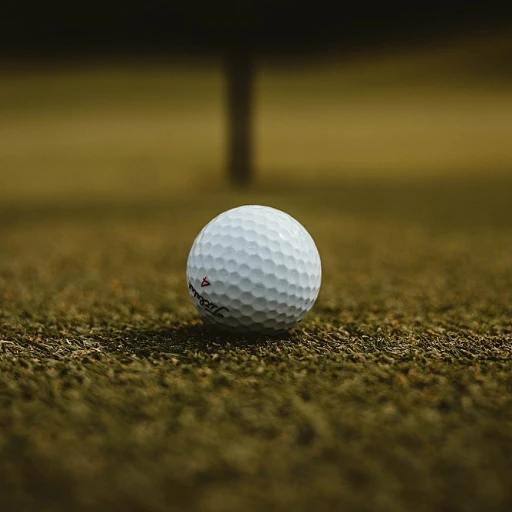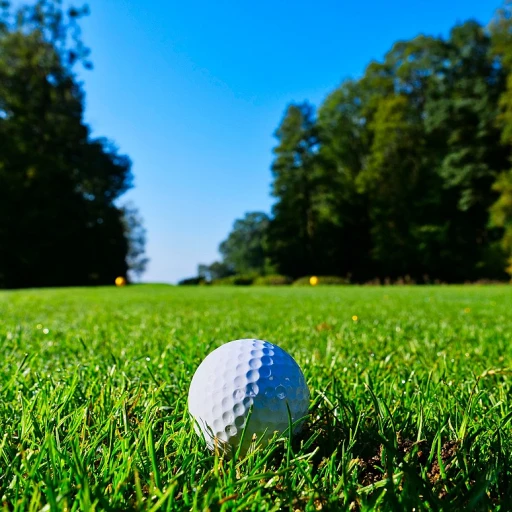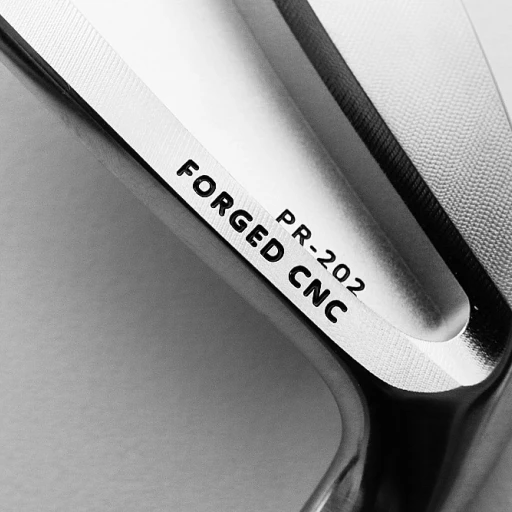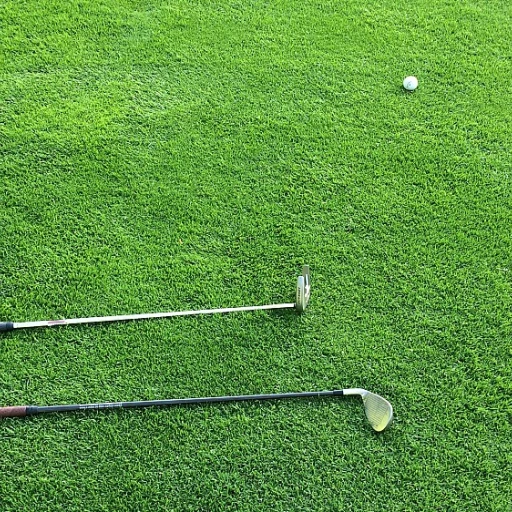
The basics of a club distance chart
Decoding the essentials
If you've ever wondered why it's so important to understand a club distance chart, think of it as the GPS of your golf game. This chart is like your secret weapon, showing you how far you can hit each club in your bag. No more guessing and hoping for the best.
Taking a closer look at what one of these charts entails, it's a breakdown that includes every club from driver to pitching wedge, indicating the average distance each one can cover. For example, a driver might average 230-270 yards, while an 8-iron could fall in the 130-150 yard range. It’s like having a roadmap for your game.
Seeing those distances isn't just about knowing how far you might hit the ball. It’s about understanding the gaps and selecting the right club to give you the precision you need. Bryson DeChambeau, for instance, is known for meticulously mapping out his distances, and it plays a significant role in his success on tour.
So there you have it—decoding the basics of a club distance chart. Each entry specifies a range because no two swings are identical, and various factors influence these numbers, which we'll dive into next. For anyone serious about the sport, knowing these numbers is crucial. It could mean the difference between hitting the green or finding yourself in the rough.
Factors affecting club distances
What impacts golf club distances
Golf club distances are influenced by myriad factors, some of which are more significant than others. Understanding these factors can help golfers fine-tune their game and achieve more consistent results.
Swing speed and consistency
Your swing speed directly impacts the distance you can hit the ball. According to a study conducted on PGA Tour players, tour pros often achieve average swing speeds ranging between 110-125 mph. For comparison, the average golfer typically has a swing speed of about 80-90 mph. Fast swings generate higher ball speeds and, subsequently, greater distances. For instance, Kyle Berkshire, a known long-drive champion, has a monstrous swing speed of over 150 mph and can hit a golf ball beyond 400 yards.
Consistency in your swing is equally important. Inconsistencies can lead to less accurate shots, making it hard to predict shot distances. Golfers like Bryson DeChambeau, known for analytic and consistent swings, show that repeatable mechanics are a key ingredient in maximizing distances.
Club head design and material
Modern advancements in technology and materials have revolutionized club design. For instance, golf drivers now incorporate aerodynamics to reduce drag and improve swing speeds. Titanium heads and carbon fiber shafts, common in top-tier clubs, contribute to lighter yet stronger clubs that can hit balls farther. Research indicates that titanium drivers can improve distances by an average of 10-15 yards compared to older models made from steel.
Experts like Dr. Alan Hocknell, head of research and development at Callaway Golf, have iterated that advanced designs such as Jailbreak Technology (bars behind the face of the driver) significantly increase ball speed, resulting in improved distances.
Shaft length and flexibility
Shaft length and flexibility affect how far you can hit the ball. Longer shafts tend to increase swing arc, allowing for greater club head speed. Average shaft lengths for drivers now range around 45-46 inches, whereas irons have much shorter shafts, contributing to more control but less distance. Shaft flexibility also plays a role; a more flexible shaft can help increase swing speed for golfers with slower swings. This is why club fitting is essential—finding the right combination of length and flexibility can optimize your distances.
Weather conditions
Weather plays an often underestimated role in how far you can hit a golf ball. High humidity slows the ball while dry conditions and high temperatures help it travel farther. Wind is another crucial factor; headwinds can drastically lessen distances, while tailwinds can add significant yardage. For instance, a strong tailwind of 10 mph can add about 10 yards to a drive.
According to the USGA, altitude also affects distance. Golfers in higher altitudes, like those in Denver, Colorado, will notice their shots travel approximately 10% farther than at sea level.
Expert insights on optimizing club distances
Optimizing club distances: insights from the experts
To dial in your club distances, it’s wise to take a few tips from the pros and industry experts. Understanding the basics can help clear up many misconceptions about your golf game, and that’s what we’re diving into now.
Improving swing speed
When talking about increasing your club distances, it's impossible to overlook swing speed. The USGA's studies highlight that a mere 1 mph gain in swing speed can add around 3 yards to your drive distance. PGA Tour players like Bryson DeChambeau have demonstrated this by focusing on specific training regimens designed to boost their swing speeds substantially.
Breaking down the smash factor
Smash factor, the ratio of ball speed to club head speed, often gets misunderstood. A higher smash factor means more efficient energy transfer. For example, PGA Tour players often have an average smash factor of about 1.5 when using drivers, optimizing every bit of their swing speed to maximize yardage.
Focusing on precision with wedges
While drivers might grab headlines, precision with wedges like a pitching wedge or gap wedge also significantly impacts your round. According to TPI (Titleist Performance Institute), focusing on accuracy with wedges will drastically improve your overall game. Kyle Berkshire demonstrated this by not just hitting long drives but also emphasizing precision with short irons and wedges.
Using technology like Trackman
Using advanced technologies such as Trackman or GPS systems can greatly influence your chart's accuracy. Experts agree that data collected from these devices offer invaluable insights. For instance, Trackman’s statistics indicate that understanding both your average club distances and real-time swing adjustments can give you a strategic advantage.
Understanding the role of custom fittings
Many experts, including Ziga Mlakar, argue that custom fitting is indispensable for optimizing club distances. Custom fittings tailor clubs to your specific swing mechanics, allowing players to better hit the ball with more precision and power.
Quoting the experts
“Understanding your club distances isn't just about knowing how far you can hit a ball, but about making smarter strategic choices on the course,” says [Insert Expert’s Name]. As per [Insert Study/Report], golfers who focus on understanding their distances better are more likely to improve their overall handicap.
Real-world examples of club distances
Distance breakdown by club type
When analyzing the distances achieved with luxury golf clubs from drivers to wedges, we must first acknowledge the stark differences between various types. A well-curated club distance chart will often display the maximal potential of each club, outlining expected distances under ideal conditions.For instance, using a driver, the average distance ranges generally from 230 to 290 yards (yds), with professional PGA Tour players, like Bryson DeChambeau, often pushing 300+ yards. In contrast, the pitching wedge typically lands balls within 100 to 130 yards. Such figures can fluctuate based on swing speed mph, club head speed, and ball speed.
Real-life examples from tour players
On the PGA Tour, top golfers meticulously track their club distances. Bryson DeChambeau, known for his power game, has a notable driver carry distance averaging around 320 yards. Meanwhile, LPGA players, having different physiological dynamics, generally achieve driver distances between 230 to 260 yards. Kyle Berkshire, the reigning long-drive champion, hits mind-blowing distances with swing speeds exceeding 140 mph.To precisely measure these hits, pros utilize advanced tools like Trackman and GPS systems. The data gathered help in refining techniques and optimizing club performance.
How luxury golf clubs fare
Luxury doesn't always equate to longer distances but often includes consistency, feel, and control. Higher-end clubs, like the TaylorMade SIM 2 Irons, produce refined results by amalgamating technology with premium materials, offering marked improvements over their counterparts. Professionals and amateurs alike notice enhanced performance — you can explore how the ultimate game improvement tool has changed golf for many.Noteworthy statistics and figures
According to a report from the USGA, advancements in club technology have increased average driving distances by about 20 yards over the past two decades. Concurrently, club manufacturers have continued to innovate, aiming to balance power with precision. Data from studies like TPI (Titleist Performance Institute) further enhances this understanding, revealing swing dynamics crucial to maximizing distance.Case in point: optimizing club distances
Many golfers believe that a faster swing speed will automatically result in longer distances. But the key lies in optimizing the smash factor, which is the efficiency of transferring energy from the club head to the ball. An excellent way to achieve this is through dedicated practice, professional coaching, and using high-end equipment designed for today's modern game. Golfers like Ziga Mlakar Scratch exemplify how mastering these elements leads to substantially better performance.The role of technology in measuring club distances
Technological advancements in club distance measurement
Throughout the years, the technological advancements in golf equipment and measurement tools have revolutionized how players approach and understand their game. The emergence of devices like GPS and Trackman have enabled golfers to obtain precise data about their performance. Nowadays, professional golfers, including Bryson DeChambeau and Kyle Berkshire, rely on these technologies to fine-tune their swings and get accurate club distances.
Previously, golfers could only estimate their club distances through trial and error on the course. Today’s tracking technologies offer exact measurements, including club head speed, ball speed, and overall distance in yards (yds). These systems track metrics in real time, providing instant feedback and actionable insights. This data is invaluable in crafting a more efficient and effective golf game, enabling you to optimize club selection based on real numbers rather than guesswork.
How data precision enhances club performance
The precision offered by modern technology can significantly enhance a player's game. Companies like Trackman use radar technology to provide detailed information on each swing. According to Trackman, the smash factor - which is ball speed divided by club head speed - is a crucial metric that top pros focus on. The average PGA tour player aims for a smash factor of around 1.5 with their driver. This data helps players understand the most efficient ways to hit the ball, combining brute force with technique for maximum distance.
Additionally, luxury clubs are increasingly integrating this data-enhanced approach. For example, the latest models of luxury irons and drivers are designed with the feedback from these technological advancements, ensuring they complement the data-driven approach of modern golfers. Custom fitting of clubs has also become more precise, with alignment based on detailed measurements, leading to clubs that are perfectly matched to a golfer’s unique needs and swing characteristics.
The influence of luxury equipment on measuring club distances
Luxury golf products, including high-end gadgets and precision-engineered clubs, play a crucial role in accurate distance measurement. Brands like Ping, Callaway, and others spearhead the innovation in terms of integrating technology with craftsmanship. For instance, the Ping Blueprint irons are synonymous with luxury and precision in the golf world. Such clubs are engineered to deliver consistent distances, with minimal deviation on hits thanks to superior materials and manufacturing precision.
The advancements in measuring devices directly influence the performance of these luxury clubs. Perfectly balanced and sculpted to leverage every swing to its maximum potential, these clubs ensure that the data obtained is accurate and reflects the true capability of the golfer. The combination of luxury equipment and technological tools offers a seamless experience for any golfer aiming to improve their distance across different clubs, from drivers to pitching wedges.
Case study: pga tour players leveraging technology
Several PGA tour players consistently use technology to optimize their performance, enhancing club distances effectively. Take, for example, the case of Bryson DeChambeau. Known for his analytical approach to the game, Bryson employs various technological tools to measure key stats such as club head speed and ball speed to refine his techniques and maximize distance. His methodical use of data highlights the significance of precise measurement in pushing the boundaries of what's achievable on the course.
Moreover, such precision isn’t just for the pros. An increasing number of amateur golfers are adopting these technologies, driven by the promise of major performance gains. Companies continue to innovate, making these tools more accessible, ensuring that golfers at every level can benefit from data-driven insights, leading to improvements in their club distances and overall game performance.
Understanding club distances in the context of luxury golf products
Synergy between luxury and performance
When it comes to understanding how club distances play out in the world of luxury golf products, the common thread is the remarkable synergy between high-end equipment and top-tier performance. Imagine owning a set of irons or a driver crafted by a brand like Ping or Callaway. Not only do these clubs boast premium materials and meticulous craftsmanship, but they also offer advanced technological features to enhance your game.
Technologically advanced clubs
High-end golf clubs often incorporate cutting-edge technology, such as AI-designed clubfaces, adjustable weighting, and various other customization features. For instance, Trackman and other golf GPS systems are frequently used by luxury golf product manufacturers to ensure that their designs optimize distance, accuracy, and forgiveness. This technology can track swing speed, club head speed, and ball speed with pinpoint accuracy, giving you the data needed to fine-tune your performance.
Expert insights from top-tier professionals
Getting insights from PGA Tour players and well-known golf instructors can also be a treasure trove of information. Professionals like Bryson DeChambeau and Kyle Berkshire are well-known for their distance-focused techniques, often emphasizing the importance of optimizing club head speed and maintaining a high smash factor to maximize distance.
Practical application for real-world performance
Seeing how luxury golf products impact real-world play is crucial. A case in point is the Ping G400 Driver, celebrated for both its luxurious feel and high performance. This driver showcases how top-grade materials and innovative design can help golfers achieve greater distances while maintaining precision.
Enhancing distances: a holistic approach
While high-end equipment does provide an edge, it’s essential to note that improvements in distance also require a holistic approach. Training routines, diet, and even mental preparation contribute significantly. Utilizing resources like TPI (Titleist Performance Institute) can help you create a comprehensive plan tailored to your specific needs, focusing not just on equipment but on overall fitness and technique.
In essence, understanding club distances in the context of luxury golf products is about recognizing the harmonious blend of advanced technology, expert insights, and physical conditioning. This synergy promises not just to elevate your game but also to offer an unparalleled, luxurious golfing experience.
Common misconceptions about club distances
Common misconceptions that confuse golfers about club distances
Grasping the real numbers behind club distances isn't as straightforward as it might seem. Let's debunk some of the biggest misunderstandings out there.
Bryson DeChambeau and speed myths
One of the major misconceptions stems from player comparisons, particularly with Pros like Bryson DeChambeau. While DeChambeau’s club head speeds and distance totals are impressive, they're not the benchmark for most golfers. It's crucial to remember that PGA Tour players' stats, like Bryson’s average driver swing speed of 133 mph, are on a different level from the average golfer.
Standardized distance metrics
Seeing distances in yards on a club distance chart might lead to misconceptions. The numbers listed, such as the average 7-iron distance being around 140-150 yds for most golfers, don’t account for variables like individual swing speed, technique, and environmental factors. Just because a distance figure is average, it doesn’t mean everyone hits those exact numbers.
Impact of equipment quality
Another myth is that more expensive clubs will automatically result in hitting the ball further. While high-quality clubs can enhance performance, they can’t compensate for poor swing mechanics. It’s a mix of technique, equipment, and practice.
Reliability of distance measuring technology
Even tools designed to measure distances, like launch monitors from Trackman or using GPS systems, might differ in accuracy for amateurs versus professional settings. Not to downplay technology, but reliance on these without the context can mislead golfers about their actual club ranges.
Smash factor and efficiency
Sometimes golfers mistake smash factor – that cool-sounding term indicating the efficiency of energy transfer from club to ball – as a fix-all. While optimizing smash factor can improve consistency, it’s not a singular solution. A consistent driver smash factor around 1.50 is great, but skill and timing play major roles too.
General club distance charts
Club distance charts can create unrealistic expectations. Seeing typical 4-wood distances of around 210-225 yards might psych out golfers into thinking they must always hit to those distances. Each golfer’s stats are influenced by their unique game.
Remember these insights when evaluating your performance. Club distances are guidelines, not gospel, and variables like tool accuracy, personal fitness, and swing speed all paint the full picture.
Tips for improving your club distances
Fine-tuning your swing for maximum distance
As we delve into ways to boost your club distances, it's vital to remember that every swing and every hit tells its own story. Improving your club distances goes beyond just swinging hard and fast. Here are practical tips that can genuinely up your game.
Focus on swing speed
Your swing speed directly impacts how far you can send that ball flying. If you're looking to give your driver swing speed a bump, consider interval training to enhance your muscle strength and endurance. The average swing speed on the PGA Tour is about 114 mph—something to aim for if you're ambitious.
Perfect your form
A consistent, repeatable swing helps maintain your distances and control. Workshops with professionals, such as those offered by the TPI, can pinpoint areas where you can refine your form. They say practice makes perfect, and it's no different here.
Work on your smash factor
The smash factor is the ratio of ball speed to club head speed. Increasing smash factor often means optimizing the impact location on the clubface, ensuring the ball hits the sweet spot. Recommendations from experts like Ziga Mlakar suggest practicing with impact tape to visually gauge your hits.
Use technology to your advantage
Devices like Trackman and GPS-enabled systems offer real-time insights into your swing parameters and ball flight patterns. The USGA has emphasized the importance of using such technologies to bridge the gap between practice and play. Investing in these can help you understand your metrics deeply and fine-tune accordingly.
Study professional techniques
Observing professionals such as Bryson Dechambeau or Kyle Berkshire on tours can provide actionable insights. Videos, tutorials, and even attending live events can expose you to high-level teaching that filters down into your game.
Real-life practice scenarios
Applying these tips in various real-world settings—different courses, weather conditions, and terrains—ensures that what you learn gets ingrained into habit. This constant adaptation can cater to overall better performance and optimal distances in competitive settings.
Boosting your club distances isn’t about one silver bullet trick, but rather a holistic approach combining all the above elements. Stick to it and you'll see measurable improvements.













